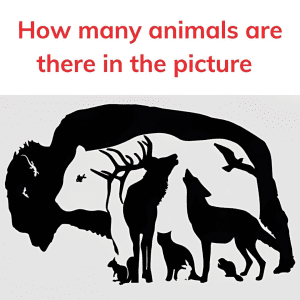Imagine you’re stranded in a jungle, hanging onto a branch over a river. A hungry lion prowls beneath you on one side, and the river teems with snapping crocodiles on the other. It seems like an impossible escape, doesn’t it? However, as with most riddles, there’s a clever solution lurking in the details. This riddle tests not just survival instincts but also creative problem-solving abilities.
Analyzing the Scene: Lion, Crocodiles, and a Mysterious Snake

The man’s position is precarious. He’s trapped with three menacing threats:
- The Lion: Waiting patiently on the ground, ready to pounce.
- The Crocodiles: Restless in the river, snapping at the thought of an easy meal.
- The Snake: Wrapped around the tree branch, seemingly a threat but perhaps the key to his survival.
This setup might seem dire, but every element of the scene holds a clue to the escape. In this riddle, the man must take advantage of his surroundings to find a way out.
Step 1: Making Use of the Snake – The Key to Survival
At first glance, the snake might look like an added danger. But in riddles, the solution often involves the least expected element. The man can use the snake to create a swing. By grabbing hold of it, he gains a lifeline to shift his position.
Here’s how:
- The man wraps the snake around his arm, gaining both a rope and a swing.
- Using his pants as a distraction for the crocodiles, he buys a moment of confusion.
- With momentum on his side, he starts to swing, moving himself out of direct reach of the lion and the crocodiles.
The snake now acts as a temporary escape tool, allowing him to move away from the immediate danger below.
Step 2: Climbing Higher – Gaining Momentum and Height
Now that he’s out of the immediate danger zone, the man can pull himself higher onto the tree. By shifting to a higher branch, he gains the advantage of height. This allows him to further distance himself from the reach of both the lion and the crocodiles. The key here is to use every bit of leverage he has to gain safety.

Step 3: Swing to Safety with the Snake
With the snake still wrapped around his arm, the man uses it to swing further away from the crocodiles. This movement is essential to gaining enough distance to safely reposition himself in the tree. The crocodiles lose interest, unable to snap him up, and the lion, unable to climb, remains grounded.
- The swing provides a crucial moment of escape, allowing the man to relocate without the predators nearby.
- Using momentum, he swings to a part of the tree that leads him farther from the danger zone, confusing both the crocodiles and the lion in the process.
The swing becomes his ticket to survival, turning a seemingly impossible situation into a clever escape.

Step 4: Repositioning and Escaping the Jungle Trap
After the initial swing, the man moves to a safe location within the tree where he’s out of reach of both the lion and the crocodiles. The lion is on the ground and unable to climb, while the crocodiles are confined to the river below. With this advantage, the man can now plot his escape route without immediate threat.

Step 5: Using the Jungle Resources to Full Advantage
The man’s use of the snake as a swing demonstrates how riddles often rely on utilizing the least expected resources. By thinking creatively, he turns a dangerous element into a survival tool. This process involves quick thinking, assessing his surroundings, and using what he has at hand to evade the threats around him.

Why Riddles Enhance Problem-Solving Skills
Riddles like this one offer more than mere entertainment. They stimulate our brains to think creatively, hone problem-solving skills, and develop mental agility. In this scenario, the man had to use all three elements to make a safe escape. Here’s how riddles improve cognitive abilities:
- Boosting Creativity: Riddles encourage thinking outside the box, often leading to solutions we wouldn’t initially consider.
- Enhancing Problem-Solving Skills: By challenging us to find solutions to unusual situations, riddles help us tackle real-life problems from unique angles.
- Improving Visual-Spatial Reasoning: Analyzing the components of a riddle trains our brains to visualize potential outcomes, ultimately strengthening cognitive skills.
Conclusion: Finding Clever Solutions in Tough Situations
In the end, the man’s escape depended on his ability to use the snake creatively, transforming a seeming threat into a vital tool. This riddle shows how thinking outside the box and using available resources can turn a life-or-death situation into a story of survival.
In both riddles and life, sometimes the answer lies in unexpected places. Remember, in challenging situations, it’s not always about what you have but how you use it. The next time you face a difficult decision, try looking for the hidden possibilities around you—there just might be a solution waiting to be found.


